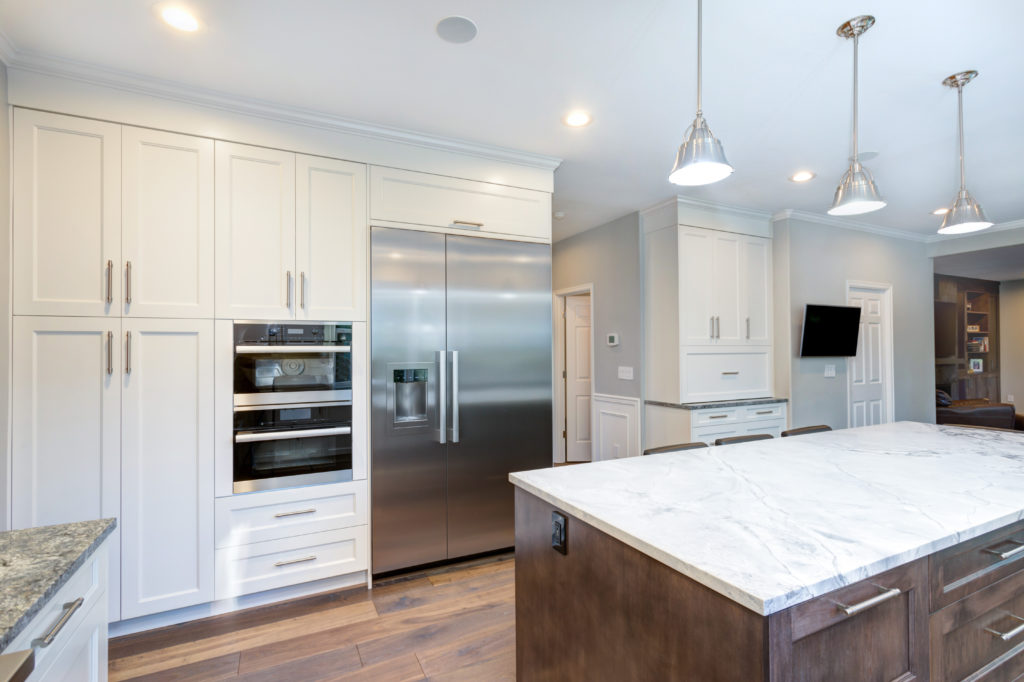
Knowing how to clean kitchen cabinets like a pro is vital. As the busiest and most popular room of any home, the kitchen is in the spotlight like no other. So, when things get a little grubby, it is hard to miss. Dark-colored and high gloss kitchens are particularly prone to emphasizing dust and fingerprints – especially those in south-facing rooms.
But even kitchens with low maintenance finishes in dimly lit spaces benefit from a deep clean every once in a while, for the sake of good hygiene and your own peace of mind.
The dirt levels in any kitchen are exacerbated by the steam from cooking pots and pans, which often contain minuscule oil particles. The most powerful extractor hood can’t stop some of this greasy steam from settling on kitchen surfaces.
Regular wipe downs will certainly make life easier when it comes to cleaning a kitchen deeply, which experts recommend should be scheduled at least once or twice a year. For a more comprehensive clean, follow our quick guide and enjoy kitchen cabinet ideas that sparkle from top to bottom, inside and out.
How To Clean Kitchen Cabinets
When cleaning kitchen cabinets – just as with any other similar task – the first step is emptying and decluttering them, and rethinking what they hold, where. Organizing kitchen cabinets at the same time will, after all, make the cleaning more impactful overall.
1. Start at The Top
Unless your cabinets fit flush to the ceiling, the very top of wall units is where the worst kitchen grime tends to linger, out of sight and out of mind. However, there are a couple of magic ingredients you can use to remove it – and cleaning with vinegar and cleaning with baking soda are both natural options, too.
2. Empty Everything Out
Begin with the highest cabinets and empty the contents in a methodical manner that will make it easy to return everything back to its original home. If you don’t have a lot of countertop space to stack items on, you might find it easier to clean kitchen cabinets two or three at a time, but always work from top to bottom.
Take the opportunity to check use-by dates on foodstuffs. If you find two packets of the same ingredient open, and still edible/in date, merge into one packet or decant into an airtight container. If anything is grubby or dusty, clean it as you go. Pop any crockery and glassware not in regular use through a quick cycle in the dishwasher to freshen it up.
3. Clean The Interiors Of Your Cabinets
Attach the upholstery nozzle and vacuum each cabinet and drawer out, taking care to get right to the back, into corners, and along shelving joints. This will get rid of major crumbs and any dust lurking in crevices.
Next, add a few drops of washing-up liquid to a bowl or sink of warm water until lightly soapy. Finally, dry down the surface with a towel or microfiber cloth.
4. Tackle The Cleaning Of Kitchen Cabinet Fronts
While the surfaces of kitchen doors and drawers are reasonably durable, they do require a gentle approach when cleaning in order to avoid damaging the finish. Laminate doors are probably the most durable, but even they can be scratched without due care. Whatever the finish of your kitchen cabinets, it is crucial to avoid using scrubbing brushes or any other abrasive cleaning tools, as well as cleaning products that include bleach or other harsh chemicals. Also resist spraying liquids directly onto the doors, even plain water, as any streaks or pools of liquid missed when drying may discolor painted and wooden finishes.
The best approach for the fronts of cabinets is to simply use a clean, damp cloth, working from the top of the door downwards in circular motions. If the door is greasy, a small amount of washing-up liquid or PH neutral cleaner in water sprayed onto the cloth should be all it takes to shift it. Then a second wipes down with fresh water to make sure any soap is removed. Finally, wipe once more with a dry, microfiber cloth ensuring the surface is dry and smear-free.
5. Wipe Handles, Knobs, And Hinges
When cleaning kitchen cabinets, don’t forget to give cabinet hardware a wipe-over with a damp cloth, using a little diluted washing-up liquid on any stubborn spots of grease. If metallic hardware is unlacquered – for example, antique brass or copper – take care to avoid any cleaning agents that contain lemon or other acidic ingredients as they will quickly discolor the finish. A soft-bristled toothbrush may be useful around the joints of hinges, where dirt and dust can build up, but take care not to damage the cabinet finish in the process.
